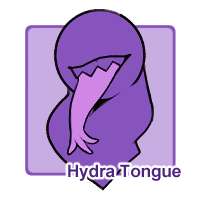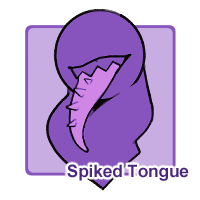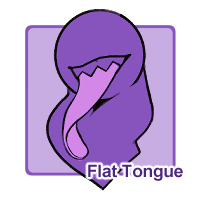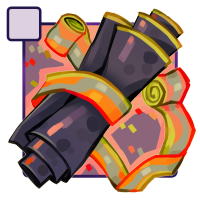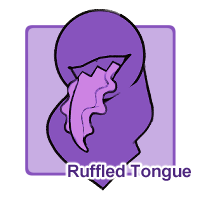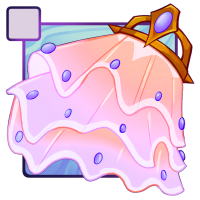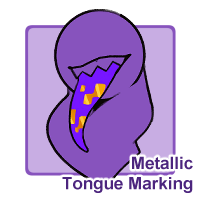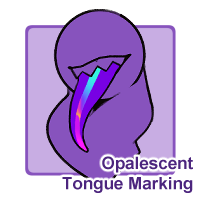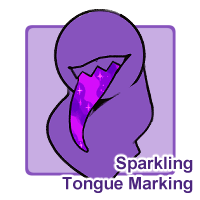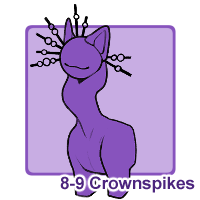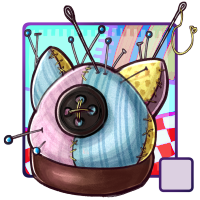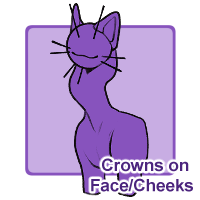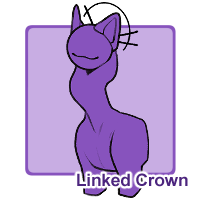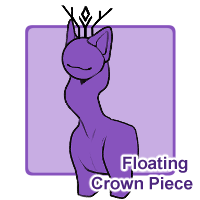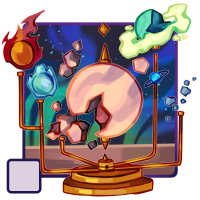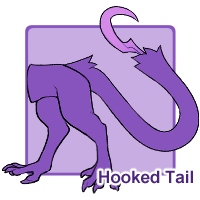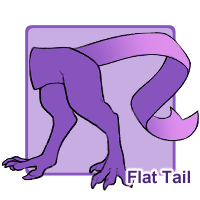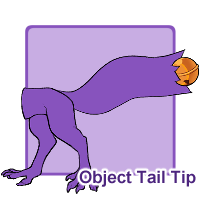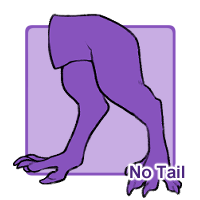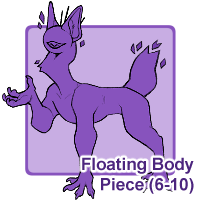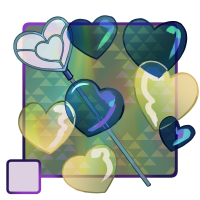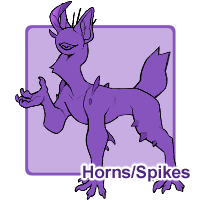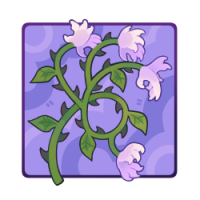Traits
[ Click here for Visual Sorter! ]
Hydra Tongue (Rare)
[Tongue with multiple splits at the tongue tip]
- Can be split 3-4 times at the tip
- Counted by number of tongue tips
- Cannot split more than a quarter up the tongue
- Should not resemble a hand
- CCCATS - A CCCat’s tongue must be above 43% saturation and value to be considered a living tongue. Please provide a flat and unshaded eye reference when submitting a MYO or Redesign (MYO and Redesign Guide)
Spiked Tongue (CCCats) (Rare)
[Tongue has small spikes]
- Spikes may be pointy, soft, leafy, blunt, slightly rounded, wiggly, thin, or thick
- Spikes may create a branching look, but should not be used to mimic multiple tongue tips elsewhere on the tongue
- Spikes cannot be overly large
- Spikes cannot cover the entirety of the tongue
- Spikes should not appear like thick branching tongues
- CCCATS - A CCCat’s tongue must be above 43% saturation and value to be considered a living tongue. Please provide a flat and unshaded eye reference when submitting a MYO or Redesign (MYO and Redesign Guide)
Flat Tongue (CCCats) (Rare)
[Tongue that is flat in shape]
- Tongue must be flat vertically or horizontally
- Tongue should still taper or round out at the end
- May not have holes, cuts, or odd shapes. You may use Odd-Shaped Tongue to create a flat tongue with the aforementioned shapes.
- CCCATS - A CCCat’s tongue must be above 43% saturation and value to be considered a living tongue. Please provide a flat and unshaded tongue reference when submitting a MYO or Redesign (MYO and Redesign Guide)
Can be applied by:
Ruffled Tongue (Rare)
[Tongue has a thin ruffle that runs down its length]
- Frill may run horizontally or vertically
- Frill may be flat or wiggly
- Tongue is standard in shape unless using other traits in combination, such as flat tongue or split tongue
- CCCATS - A CCCat’s tongue must be above 43% saturation and value to be considered a living tongue. Please provide a flat and unshaded tongue reference when submitting a MYO or Redesign (MYO and Redesign Guide)
Can be applied by:
Metallic Tongue Marking (Rare)
[Tongue with one color that has a metallic and shiny sheen]
- Affects 1 color on the tongue
- Tongue reflects a metallic sheen which is generally monotone, meaning highlights and shadows share general hue with the base color
- CCCATS - A CCCat’s tongue must be above 43% saturation and value to be considered a living tongue. Please provide a flat and unshaded tongue reference when submitting a MYO or Redesign (MYO and Redesign Guide)
Opalescent Tongue Marking (Rare)
[Tongue with one color that reflects multiple hues, considered opalescent or multi-chrome]
- Affects 1 color on the tongue
- Tongue reflects multiple colors, creating a multi-chrome look
- CCCATS - A CCCat’s tongue must be above 43% saturation and value to be considered a living tongue. Please provide a flat and unshaded tongue reference when submitting a MYO or Redesign (MYO and Redesign Guide)
Glowing Tongue Marking (Rare)
[Tongue with one color that glows and emits light]
- Affects 1 color on the tongue
- Can be any living color, but glow must share hue with the base color of the markings
- CCCATS - A CCCat’s tongue must be above 43% saturation and value to be considered a living tongue. Please provide a flat and unshaded tongue reference when submitting a MYO or Redesign (MYO and Redesign Guide)
Sparkling Tongue Marking (Rare)
[Tongue with one color that sparkles and reflects light akin to glitter]
- Affects 1 color on the tongue
- Sparkles must share hue with the base color of the markings
- Sparkles cannot trail off the tongue marking
- CCCATS - A CCCat’s tongue must be above 43% saturation and value to be considered a living tongue. Please provide a flat and unshaded tongue reference when submitting a MYO or Redesign (MYO and Redesign Guide)
8-9 Crownspikes (Rare)
[8-9 crownspikes total]
- Counts for the total crowns across all parts of the body
Can be applied by:
Crowns on Face/Cheeks (Rare)
[Crowns on the front of the face and cheeks]
- Crowns sit on the face or cheeks
- Can have crowns on both the face, forehead and in common placements such as the back of the head or trailing down the neck without needing extra traits
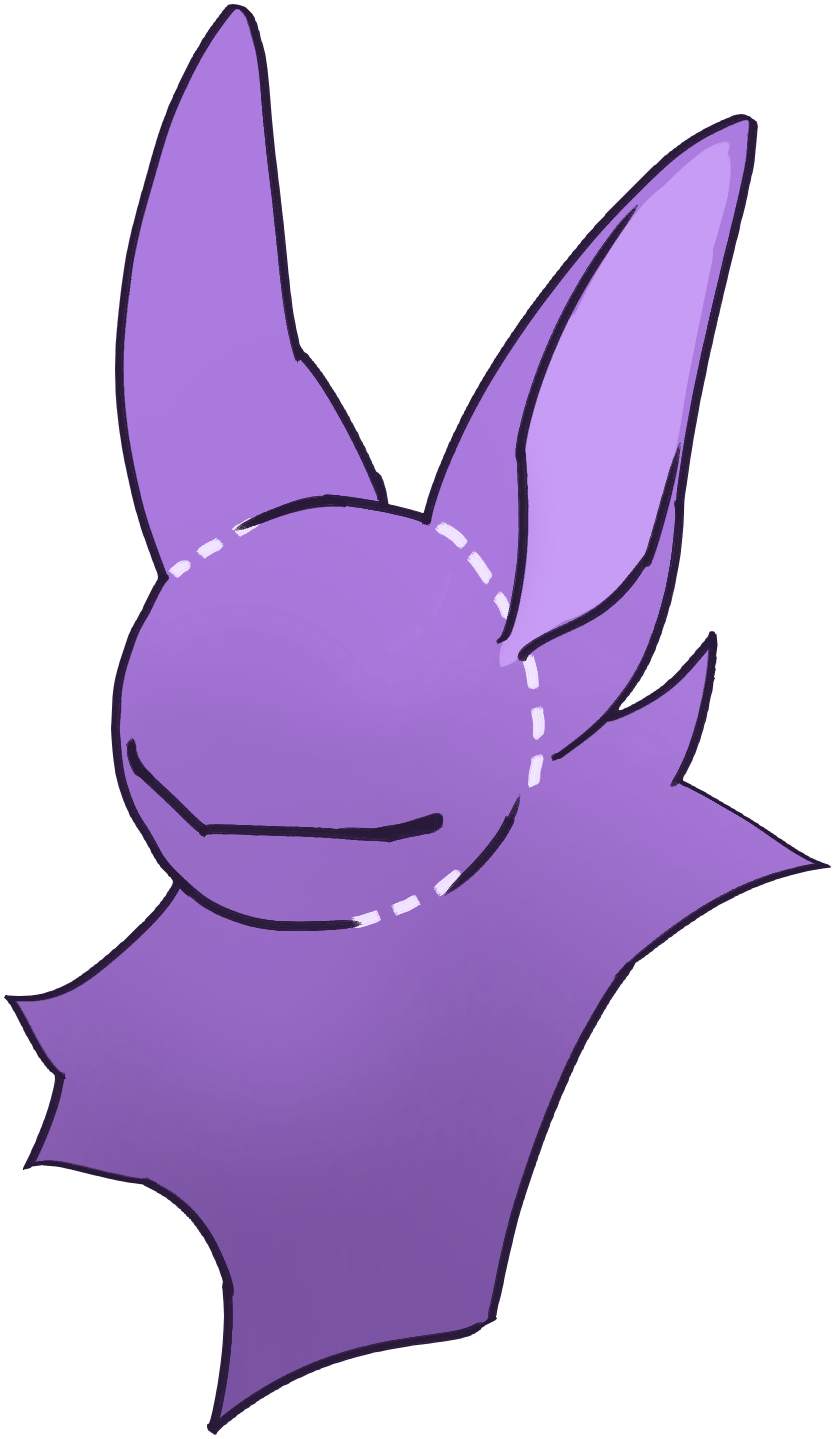
Linked Crown (Rare)
[Crownspikes that connect above the base]
- Crownspikes must connect above the base
- May create halo shapes as long as they clearly connect to the CCCat's head
- Crowns that split at the very base are considered linked crowns
- May be combined with Aquatic Host traits to connect crowns with fins
- Cannot connect along the entire length unless affected by the above Aquatic Host trait
Floating Crown Piece (Rare)
[Crown base is connected, but part of the crown floats]
- Crown base must be connected to the head
- Must float near the crowns or appear as a floating but extended piece of them
- Can be combined with Particle Crown for larger particles
Can be applied by:
Split Tail (2-10) (CCCats) (Rare)
[Tail splits up to 10 times]
- Up to 10 splits
- Traits that affect tail tips may apply to all tail tips present
- Counted by number of splits present in the tail
- Splits can begin at different parts of the tail but cannot be more than half of the tail length
- Splits can merge back together. The split and merged end count as a total of 2 splits
- Counts TOTAL splits across all tails
- Cannot split more than halfway down the tail
Hooked Tail (Rare)
[Tail ends in a hook shape]
- Can be odd in shape, have holes, prongs or spikes, sharp or geometric bends, or intricate pieces as long as the shape is overall a hook.
- Should not resemble objects
Flat Tail (CCCats) (Rare)
[Tail is flat]
- Can have shapes, notches, and internal holes, but still requires shapes such as Spaded Tail or Hook Tail to change the tail tip.
- May be oriented horizontally or vertically
Twin Tail (CCCats) (Rare)
[Tail with a single split longer than half its length]
- Tail splits once past half the tail length
- Can be applied to any number of tails
- Each tail top can be affected by tail tip traits
- Cannot split at the base. This would be considered another tail
Object Tail Tip (CCCats) (Rare)
[Tail ends in an object of some kind]
- Tail can end in an object such as a bell, a rose or plant, a microphone, weapons, rattlesnake rattler, etc.
- Objects with multiple parts to it such as chains or multiple materials may be used as long as those parts would naturally appear as part of that object [Example: A lantern may hang from a short chain, have glass paneling, and metal casing. It would not include extra inserts such as candles, but those could be added as accessories]
- This trait is not needed when using Object Growth unless the object is different than the Object Growth [Example: A lantern tail with moss Object Growth]
- If the object glows [Light Bulb] or is metallic [Bell], it can have those effects, but the design would still require those respective marking traits if they were to appear elsewhere on the body.
- Cannot appear to replace the tail with an object
- Cannot have elemental effects
Can be applied by:
No Tail (CCCats) (Rare)
[No tail is present]
- Cannot be affected by any tail traits
Floating Body Piece (6-10) (CCCats) (Rare)
[Small, shaped object floating separately from the body]
- Must be an extension from an existing part, such as an ear, horn, tail tip, fur, etc.
- Must match a color that appears on the body, but may have patterning and be affected by marking traits
- May be shaped as long as they appear to be a continuation of a body part
- May be symmetrical or asymmetrical
- Cannot resemble objects
- Cannot be shapes that float around the body purely independantly
Can be applied by:
Horns/Spikes (CCCats) (Rare)
[Horns or spikes located anywhere on the body]
- Can be pointed, antlers, be branched, spiked, blunt, square, or rounded and cylindrical. Can also be textured with swirls, overlapping scale-like effects, and carvings.
- Can be broken, notched, or cut
- Can be placed anywhere on the body
- Counts for all horns and spikes on the body. Can have multiple types at once
- Can be engraved and affected by marking traits
- Horns should not resemble objects
- Cannot obscure the body or replace a body part
- Crowns should not resemble horns
